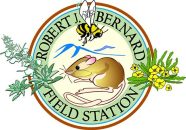LaMon, Virginia (2006)
Mapping the Landscape of Fear for the California Ground Squirrel (Spermophilus beechyi).
Bachelor of Arts, Pitzer College, Biology.
Advisor: Diane Thomson.
Habitat selection is often based upon a trade-off between food and safety. A spatial map of the animal’s foraging cost of predation – a landscape of fear – helps researchers understand the animal’s perceived predation risk. The cost of predation to the California ground squirrel (Spermophilus beecheyi) was determined by using depletable food patches to measure giving-up densities (GUDs) at each of forty-nine patches across an 80 m2 grid. Using the ArcGIS computer program to extrapolate GUDs across the grid, a spatial map was created to represent the squirrel’s perceived foraging cost of predation. The landscape maps were then related to hole location and physical landscape features. GUDs were lowest near large groups of trees and near the burrow entrances. Thus, the squirrel’s perceived predation risk was shown to be higher in open areas further from his hole.
